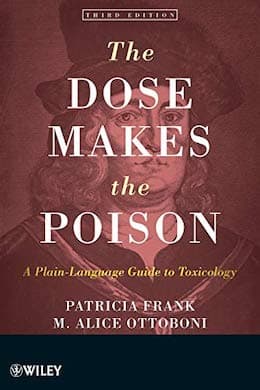
-----
Electroforming of Silver
Q. We are looking for information on the use of silver electroforms in industrial (non-jewelry) applications and would welcome any advice that you can give as to information sources.
Robert Beasley1996
A. Hi, Robert. Many of the world's electroforming authorities gathered in Las Vegas for 3 days in 1996 for an AESF & NiDI Electroforming Course & Symposium. Contact AESF to see if proceedings are still available.
for Plating Shops & Engineers
Electroforming by Peter Spiro (1971)
avail from eBay or Amazon
Bureau of Standards: Electroforming of Waveguide Components
avail from AbeBooks or Amazon
Electroforming of copper for high vacuum applications
avail from AbeBooks
Fabrication of liquid-rocket thrust chambers by electroforming
avail from AbeBooks
A survey of electroforming for fabricating structures by W.H. Safranek
avail from AbeBooks
Electroforming in Restorative Dentistry
avail from AbeBooks or Amazon
Principles of electroplating and electroforming by William Blum (1949)
avail from eBay, AbeBooks or Amazon
(as an Amazon Associate & eBay Partner, we earn from qualifying purchases)
Many texts serving the industry at least briefly cover silver and electroforming, but I know of no text focusing specifically on silver electroforming. If you can't find the proceedings of that seminar, I think you'll need to do a literature search to pick up individual citations on the subject. Good luck.

Ted Mooney, P.E.
Striving to live Aloha
finishing.com - Pine Beach, New Jersey
Ted can be retained for immediate
answers or long term project help
A. "Electroforming -- A comprehensive survey of theory, practice and commercial applications" by Peter Spiro B.Sc.(Eng.), A.C.G.I., A.M.I.Mech.E., A.M.B.I.M. Publisher: Robert Draper Ltd Teddington 1968 ⇨
Reg Whelan- Kelso, Qld, Australia
2001
Q. I want to fabricate a hollow tube of Ag by electroforming process. The thickness of the tube should be 35 micron , the length should be 10 mm and the outer dia should be 150 micron. How can I do this?
Azizur [last name deleted for privacy by Editor]- Singapore
2003
A. I suggest you use a disposable mandrel because the wall thickness is so small there will be little inherent strength in the tube. If you use a permanent mandrel, you may find it difficult to remove the electroform from the mandrel. You can use aluminium and dissolve it out in alkali. I would use a cyanide bath to deposit the silver and rotate the mandrel.

Trevor Crichton
R&D practical scientist
Chesham, Bucks, UK
(affil links)

free pdf is currently available from academia.edu
Q. Thanks Trevor Crichton.
Can you please tell me the composition of the bath. Does it require any surface treatment before the deposition?
If, how?
Azizur [returning]- Singapore
Tip: This forum was created to build camaraderie through sharing of tips, opinions, pics & personalities.
The operator & readers who are here for that often won't engage with anonymous posters.
A. Hi Azizur. Aluminum mandrels should probably best be zincated, then cyanide copper struck, then silver struck, then silver plated.
As for composition, as Alan Blair says in the Metal Finishing Guidebook, they have been essentially unchanged for 180 years now. If you have no plating textbooks on hand, download the Guidebook (but don't work with cyanide without hands-on training in it).
Luck & Regards,

Ted Mooney, P.E.
Striving to live Aloha
finishing.com - Pine Beach, New Jersey
Ted can be retained for immediate
answers or long term project help
Jeweler needs silver electroforming service
RFQ: I am a jeweler looking for a company that can electroform in silver, preferably over wax models or something else that can be removed. Are there any companies in North America that do this?
Catherine AllenJewellery Student - Halifax, Nova Scotia, Canada
2006
Ed. note: This RFQ is outdated, but technical replies are welcome, and readers are encouraged to post their own RFQs. But no public commercial suggestions please ( huh? why?).
Health & security needs for silver electroforming?
for Artisans, Jewelry, Crafts
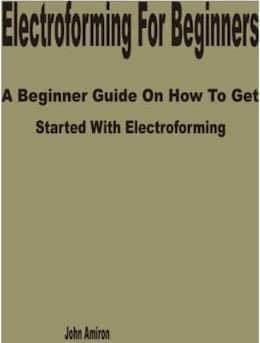
avail from eBay, AbeBooks or Amazon
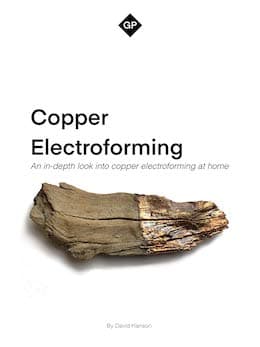
avail from Amazon
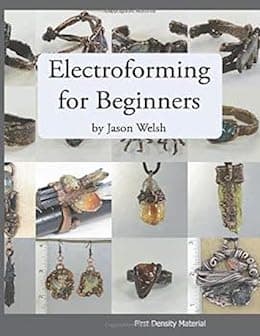
avail from Amazon
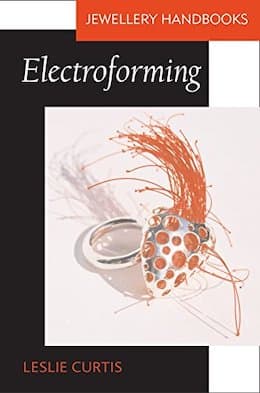
avail from eBay, AbeBooks or Amazon
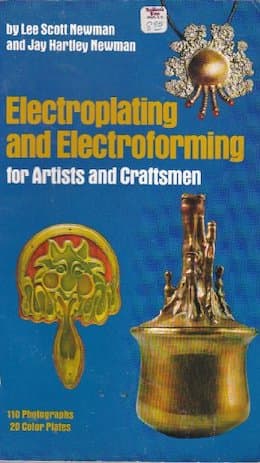
avail from eBay, AbeBooks or Amazon
(as an Amazon Associate & eBay Partner, we earn from qualifying purchases)
Q. Hi, I'm now wishing to set up my own tank to do silver-electroforming because it is the main process for my work (jewellery) and I wanted to know the equipment necessary in terms of extraction and health and security regulations. Could you help me with that information or do you know who should I ask about this? Thanks.
Ornella Iannuzzistudent - UK
2007
A. Practically all silver plating is done from a cyanide solution which is highly toxic.
As well as the obvious hazards, there is a problem in disposing of waste.
There is also considerable cost in purchasing silver anodes and plating salts.
If you do not have experience in handling toxic chemicals and electroplating technology, electroforming is best left to properly equipped professional shops.
Why not discuss your project with a local plating company. If you produce the masters, they can do the plating.

Geoff Smith
Hampshire, England
Silver electroplating thickness max limit?
Q. Hello community,
My name is Gregory I am an artist and I am exploring all the different processes, that we as humans have developed.
I am interested in electroplating in its scientific and historical point of view.
Here especially, I want to explore the excesses or the limits of the process.
For example I want to leave a piece to be electroplated for as long as possible, a bit like a plant growing.
So I was wondering if you had experienced with does limits and if you have visual examples, stories and of course advices and even warnings for me?
Take care,
Gregory
artist - GENEVA, Switzerland
October 7, 2010
A. Hi, Gregory. Silver can be plated at least thick enough to be "self standing". For example, jewelry can be manufactured by starting with a wax form, metallizing it, silver plating it, and then melting the wax away. When the plating is thick enough to be self standing like this, and the plating becomes the object rather than a coating on an object, it is sometimes called "silver electroforming". If you search for that term I think you will find the examples you seek. Good luck.
Regards,

Ted Mooney, P.E.
Striving to live Aloha
finishing.com - Pine Beach, New Jersey
Ted can be retained for immediate
answers or long term project help
October 7, 2010
Q. Hello Ted,
Thank you for including my question on your website.
As English is not my first language and as I am discovering electroplating, it was hard for me to search with words what I was looking for.
But after spending a few hours on your threads, I found those two below:
Thread 37080 & thread 46603
Nickel trees is what I was somehow guessing would happen, and I am delighted to see a few pictures of it. It reminds me of Fulgurite in a certain way.
If I understand, for platers this is not really the best friend (nickel tree), but let's imagine that my goal it to create the biggest possible nickel tree.
What would be the kind of problems that I would face as it grows bigger and bigger?
How big could I go as a hobbyist? How big could a professional plater go?
Would I be able to modify the way it grows along the process?
Would it grow differently depending of the metal used to plate?
My curiosity is endless, I can't wait to try electroforming!
Take care,
Gregory
- Geneva, SWITZERLAND
A. Hi,
I recall seeing a copper electroform that had run amok and looked rather like a coconut. I don't think there is any actual limitation on size.
Regards,

Ted Mooney, P.E.
Striving to live Aloha
finishing.com - Pine Beach, New Jersey
Ted can be retained for immediate
answers or long term project help
A. Gregory, You can electrodeposit as much silver as you like if you start doing electroforming. As Ted says, this creates a free standing article, but the only limitation is the length of time you want to spend making it. I have seen electroforms that range in thickness from a few tens of microns up to and inch or so. There are numerous textbooks on the subject of electroforming, so it is worth consulting them for further advice.

Trevor Crichton
R&D practical scientist
Chesham, Bucks, UK
Electroforming with non-cyanide silver
Q. Hello!
I have been copper electroforming jewelry for about 4 years now but get a lot of requests for silver because of sensitivities or just because of skin greening. I want to electroform with fine silver but don't want to use cyanide based solution. Does anyone know of a recipe for successfully getting a thick silver plate similar to when using copper? I know it can be done but haven't been able to find the correct recipe.
Thank you!
Designer - Etters, Pennsylvania USA
November 27, 2017
A. You can try next solution: 200 gms potassium ferrocyanide
⇦ on
eBay
or
Amazon [affil link]
/20 gms potassium carbonate/40 gms silver chloride/1 lit water/SS anodes. Pyrophosphate based bath can be used too.
I think that there is at least one proprietary bath (SILVERON GT-101 Bright Silver). Hope it helps and good luck!
- Zagreb,Croatia
A. potassium ferrocyanide
⇦ on
eBay
or
Amazon [affil link]
based plating solutions are oldest cyanide-free silver and gold plating processes (1843 !!)
Potassium ferrocyanide is nontoxic, and is not decomposed to cyanide in the body. Lethal dose for rats is 6400 mg/kg - it is harmless if compared with potassium cyanide (10 mg/kg for rats). It and the related sodium salt are widely used as anti-caking agents for both road salt and table salt (FDA approved!) Hope it helps and good luck!.
- Zagreb,Croatia
A. Amateur hobbyist. Here is my go-to silver plating recipe. Mixing isn't as straight forward as throwing everything together, so pay attention.
Dissolve 5 g SILVER NITRATE into 250 ml distilled water. Dissolve 4 g KOH (POTASSIUM HYDROXIDE) into 100 ml water in separate container.
Pour KOH solution into silver solution and stir, it will turn black.
Slowly add 8 g PYRROLIDINE (SUCCINIMIDE) while stirring until clear.
Add 4 g more pyrrolidine, 4.5 g KNO3 (POTASSIUM NITRATE), and 2.1 g more KOH. Stir.
Add 1.5 g AMMONIUM THIOsulphate (or 3 ml Kodak Rapid Fixer part A) as the brightener.
Half a drop of DAWN dishwashing detergent.
Add 425 ml more water.
Use very low voltage, start at 0.1 Volt, over-voltage will make dull finish. Copper will auto plate with no current. Use pure silver bar on positive, work on negative.
Hope that helps. Works for me.
- Wisconsin, USA
January 5, 2018
Q. Mr. Dolata, is that recipe for electroplating only or can it be used for silver electroforming too?
Monica Leftwich- Newport News, Virginia, USA
May 17, 2020
A. Hi Monica
David's posting was from 2-1/2 years ago and we should probably leave him rest after his careful efforts toward clarity (no auto-completes for David) ... but we'll e-mail him and see if we can reach him and he responds :-)
Luck & Regards,

Ted Mooney, P.E. RET
Striving to live Aloha
finishing.com - Pine Beach, New Jersey
Ted can be retained for immediate
answers or long term project help
Thick silver Electroplate in a Home Studio
Q. Hello,
I am a jewelry artist and currently do a lot of electroplating in copper, and some finishing in silver.
My question is, I would like to electroplate a thick layer of silver, possibly over a base of sterling, but how do I achieve this? I am looking to create my pieces from my home studio. Any suggestions? I have done a lot of researching, but can't find what I need. I would appreciate any help you can offer me. ~Suz
- Ashland Ohio
October 10, 2020
(affil links)

free pdf is currently available from academia.edu
A. Hi Suz. Virtually all silver plating is done from a toxic cyanide based solution as it has been for 150+ years, and cyanide has no place in a home studio. You might investigate the availability of a non-cyanide plating solution from EPI / Electrochemical Products Inc. [a finishing.com supporting advertiser], or a hobby plating supplier, or further investigate Goran Budija's discussion of non-toxic ferrocyanides.
As for how to do it, the Metal Finishing Guidebook has a very good chapter on silver plating, including surprisingly detailed info on non-cyanide plating processes. After that you can search the site for lots of Q&A's about silver plating. Good luck!
Luck & Regards,

Ted Mooney, P.E. RET
Striving to live Aloha
finishing.com - Pine Beach, New Jersey
Ted can be retained for immediate
answers or long term project help
Thick silver plating
[editor appended this entry to this thread which already addresses it in lieu of spawning a duplicative thread] Q. I have a small desktop plating station and a rectifier. I am using Krohns silver plating solution with a small amount of cyanide and a pure silver anode. I want to know if it is possible with this set up to plate up to 30 microns of silver on small objects such as clarinet keys, and if it is possible what the best procedure would be.

John Talcott
band instrument repair - Springville, Utah, USA
April 22, 2017
A. Hi John. We appended your inquiry to a thread where you will learn that silver is electroformed to thicknesses much greater than that ... the thickness should be no problem at all.
As for technique, it depends on what those small objects are made of. It's generally advisable but probably not necessary to do a layer of nickel plating first. But silver is a very noble metal, very prone to (non-adherent) 'immersion deposits'. At the least, the parts should be electrically hot (connected as a cathode) for hot entry. Even better, the parts should get a silver strike first -- a deposit from a silver plating bath which is dilute, higher in cyanide, or otherwise very reluctant to deposit silver. This way it will not 'immersion deposit'; and once you have that thin silver strike you needn't worry about 'nobility' because you're plating silver on silver. The previously mentioned Metal Finishing Guidebook tells all :-)
Luck & Regards,

Ted Mooney, P.E. RET
Striving to live Aloha
finishing.com - Pine Beach, New Jersey
Ted can be retained for immediate
answers or long term project help
Q, A, or Comment on THIS thread -or- Start a NEW Thread
